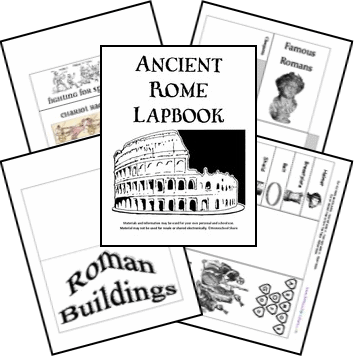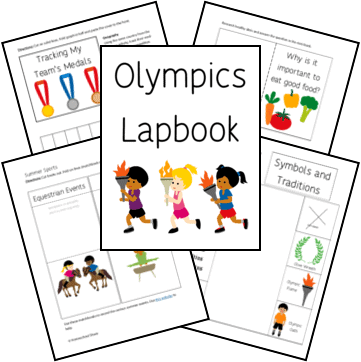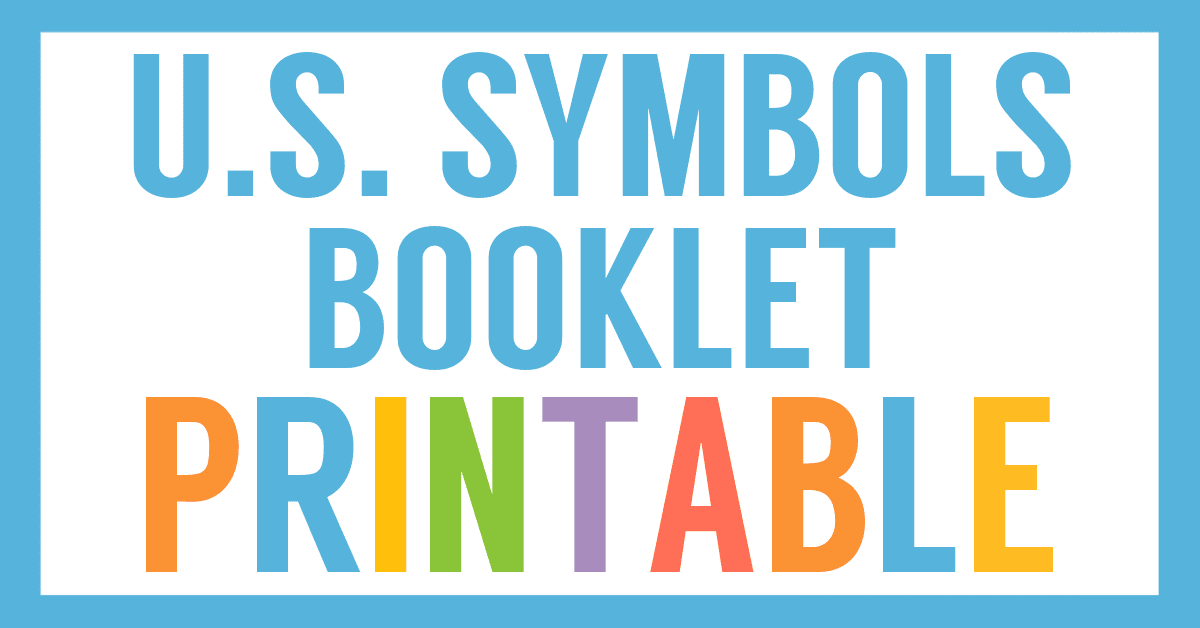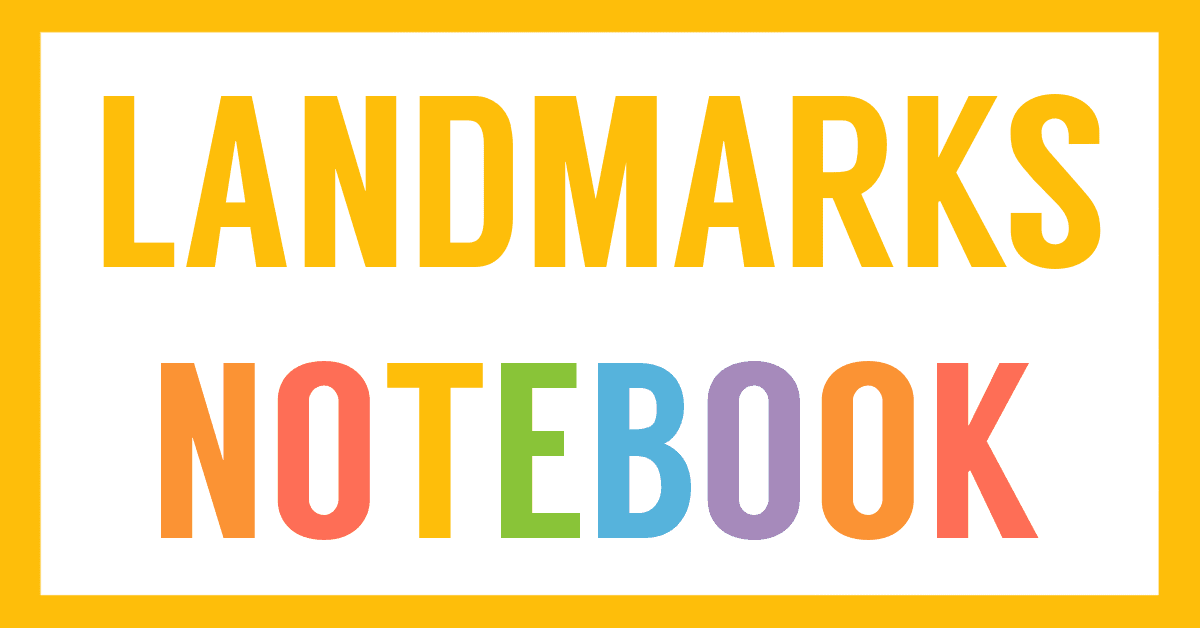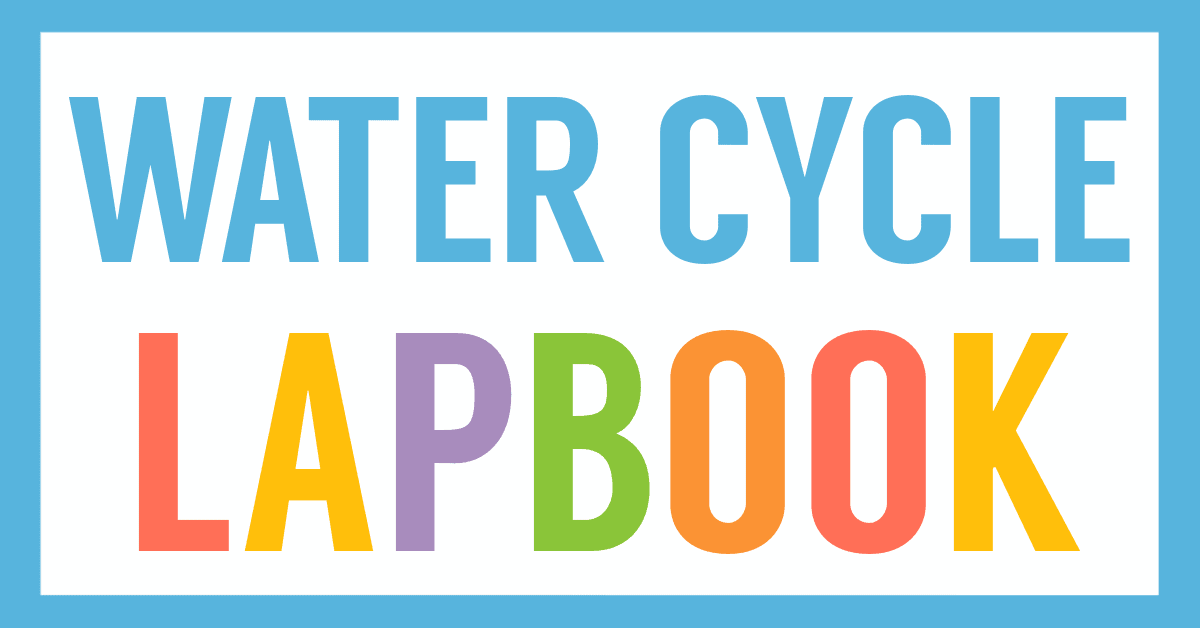Affiliate Disclaimer
We sometimes use affiliate links in our content. This won’t cost you anything, but it helps us to keep the site running. Thanks for your support.
Travel back in time and learn all about famous places, events, and people from Ancient Greece with our free Ancient Greece Lapbook.
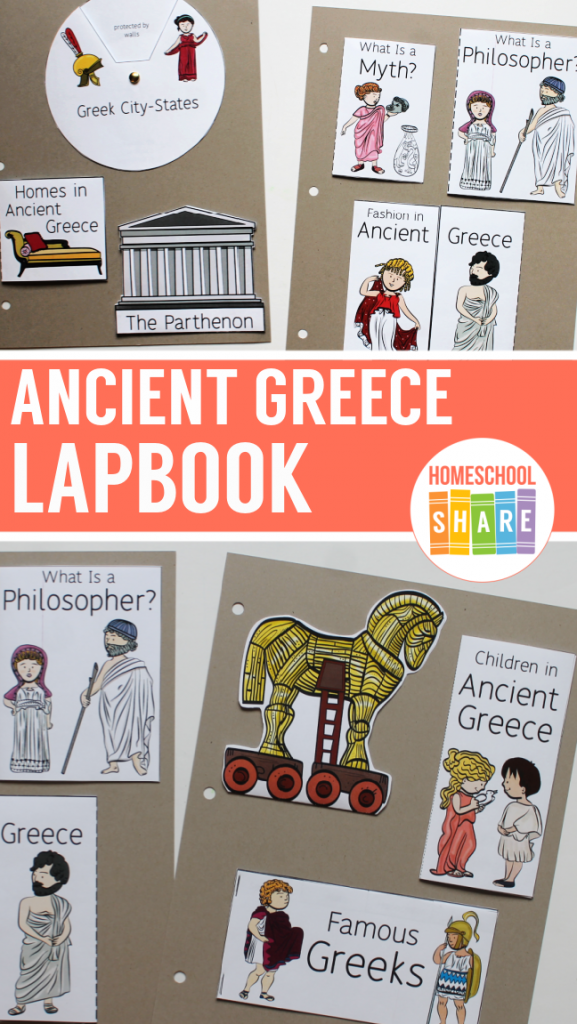
Thanks to Jodi Small for writing the lessons and creating the printables for this lapbook.
Ancient Greece Civilization Lapbook Lessons
Here are some sample lessons from the Ancient Greece lapbook study.
Greece
The small country of Greece is located along the coast of the Mediterranean Sea. There are mountains and islands. It is a hot, dry climate most of the year. Olive trees grow well in Greece’s dry, rocky soil. They are very strong and can stand up under heavy wind. Greeks believed olive trees were symbols of strength and peace. Greeks used olive oil to clean their skin and they used it in their hair.
Ancient Greece
The first settlers of Greece were shepherds, farmers and fishermen. Greek settlements competed for the best, most fertile land because there was so little of it. The country was divided into city-states, which is a city that governs the countryside around it. Greek people all worshipped the same gods, had the same customs and were proud to be Greeks. Most cities were near the sea because most travelling was done by boat. Since there were so many hills and mountains, travel on land was difficult and there were not many roads. Greek cities were protected by walls.
Trojan War
Because Greece was so hilly and dry, they were unable to grow enough wheat, so Greeks had to sail across the Aegean Sea to Asia and buy wheat. The city of Troy was located at the entrance of the channel connecting the Aegean Sea to the Black Sea. Greeks had to cross this channel to get to Asia and the king of Troy, King Priam wanted the Greeks to pay a toll to pass through. The Greeks were angry that they had to pay a toll to pass.
The king of Sparta, King Menelaus’s wife was captured by the Trojans, the people of Troy. King Menelaus planned to go to Troy to get his wife, but he needed help. His brother was King Agamemnon, the king of Mycenae. The two Greek armies decided to go to war with the city of Troy. Odysseus, the son of the King of Ithaca, joined the armies to attack.
The city of Troy was surrounded by strong walls. The Trojan army came out to fight in the rocky field between their city and the sea. After ten years of fighting and much death, no one could win the war. Odysseus decided the only way to win was to get inside the city.
The Greeks used lumber to build a huge wooden horse that was hollow with a small trap door on the side. When the horse was finished, many soldiers were put inside the horse. The rest of the soldiers got in their boats with everything from their camp and left to go back to Greece. Only one soldier, Sinon, stayed behind hiding in the bushes. The lookout for the city of Troy announced the Greeks had left. The people of Troy went outside their city and found the huge wooden horse.
The Trojans examined the horse and were suspicious. Then Sinon is found hiding and is brought before the King. Sinon tells the Trojans that the horse is a gift from Athena. The King did not want to destroy the horse and make Athena angry, so they put ropes around the horse’s neck and pulled it into the city. The Trojans had to tear down part of the gate to the city to get the horse inside. Once the horse got to the temple of Athena, they held a festival. After the people in the city of Troy went to sleep, the Greeks came out of the body of the horse. They killed the lookout guards and lit a torch on top the wall to signal the Greek ships to return. The Greeks from the ships entered the city through the hole in the wall and they all set fires to Troy. Some Trojans escape, but many died in the fires. The Greeks won the war.
You can grab a copy of all the Ancient Greece lessons and lapbook printables by subscribing to the newsletter, using the form on this page.
Ancient Greece Lapbook Printables
In addition to the lessons, the file includes these mini-books for your student to create a lapbook:
- Map of Ancient Greece Shutterfold Book
- Trojan Horse Shape Book
- The Iliad Pocket
- The Odyssey Pocket
- The Parthenon Shape Book
- Paul’s Journey to Greece Mini-book
- What Is a Myth? Simple Fold Book
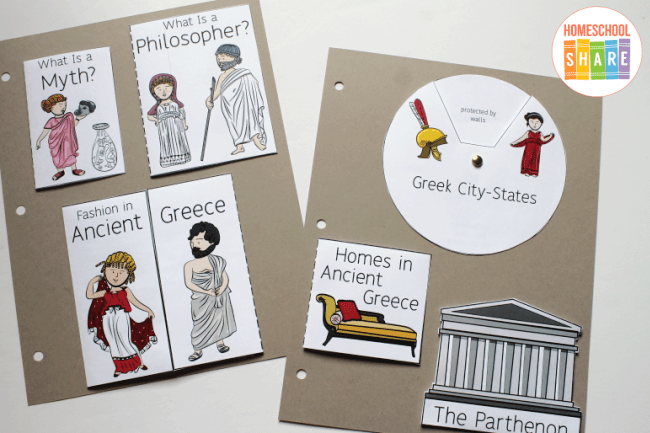
- What Is a Philosopher? Simple Fold Book
- My Favorite Greek Myth Pocket
- Homer the Poet Matchbook
- Amphitheater Matchbook
- Greek Gods Matchbooks
- Famous Olympians Flap Book
- Olympic Beginnings Simple Fold Book
- Ancient Olympic Events File Folders
- Famous Greeks Tab Book
- And more!
Ancient Greece Civilization Book List
Grab some books about Ancient Greece to read together this week as you complete the lessons and lapbook.
- Eyewitness Books Ancient Greece by Anne Pearson
- The Trojan Horse: How the Greeks Won the War by Emily Little
- D’Aulaires Book of Greek Myths
- The Librarian Who Measured the Earth by Kathryn Lasky
- King Midas and the Golden Touch by Charlotte Craft
- The Children’s Homer by Padraic Colum
- Classical Kids by Laurie Carlson (ideas for hands-on projects)
How to Get Started with Your Ancient Greece Lapbook
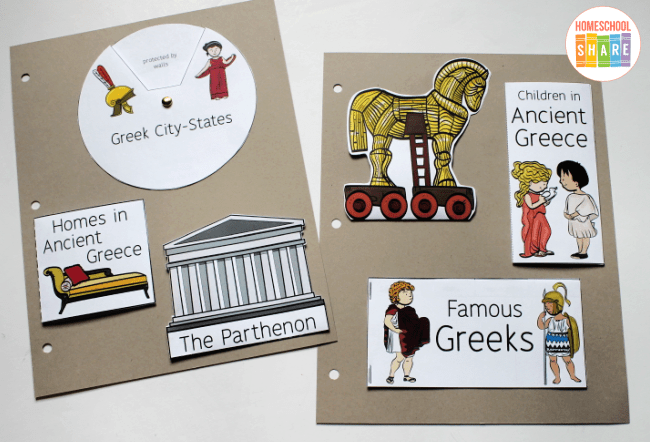
Follow these simple instructions to get started with the Ancient Greece unit study and printables:
- Check out Ancient Greece civilization books from your local library.
- The lapbook comes in two versions: a color version and a black and white version. Choose the one you want to use.
- Print the Ancient Greece unit study.
- Choose the lessons you want to use with your student (a highlighter works great for this).
- Choose and prepare the lapbook printables you want to use with your student. Decide if you will make a traditional lapbook with lots of file folders, or if you will use pages of cardstock in an notebook (see sample below).
- Learn all about Ancient Greece.
Ancient Greece Civilization Lapbook Sample
This unit study has a ton of mini-books. Because of this, we used pages of cardstock for the sample.
Simply three-hole punch your cardstock and add the pages to a binder.
You will need several pages of cardstock if you are going to complete all of the mini-books.
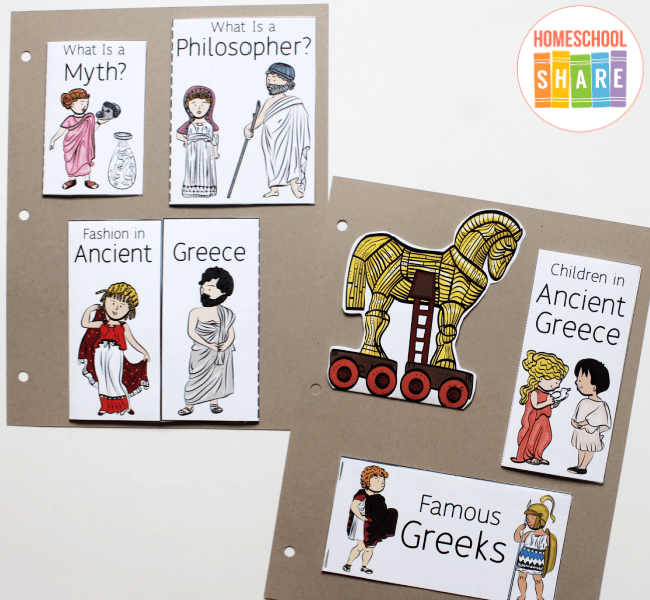
Download Your Free Ancient Greece Lapbook
Subscribe to the newsletter below to access your free Ancient Greece Lapbook.

